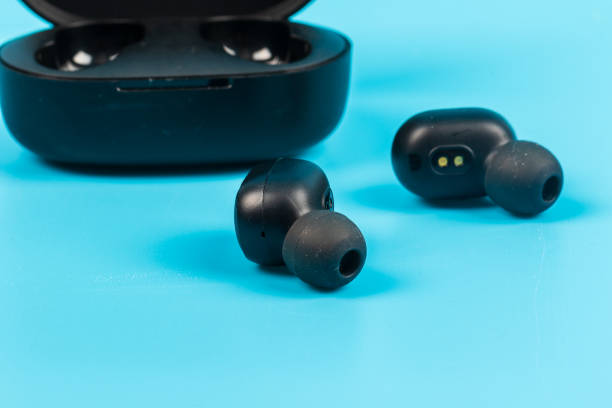In an age when wireless technology is becoming increasingly indispensable, Bluetooth earphones have found their place in the pockets and around the necks of millions. But how much do we truly understand about the inner workings of these convenient gadgets?
A significant part of this sonic magic lies in a minute but mighty component: the Bluetooth earphone processor. From managing audio quality to power efficiency, the processor is the unsung hero of your wireless audio experience. This article aims to shine a spotlight on the intricate world of Bluetooth earphone processors, explaining how they contribute to the overall performance of your device.
The Heartbeat of Bluetooth Earphones: Understanding Processors
In this section, we’ll dive into the world of processors, exploring their role as the central command of Bluetooth earphones. Learn about the complex operations they perform and how they contribute to your seamless audio experience.
The Role of the Processor
In the simplest terms, the role of the processor is to receive, decode, and transmit signals. In a Bluetooth earphone, the processor receives audio data from the source device. This data is digital, and the processor decodes it into an analog signal that the earphone speakers can then play as sound.
Beyond audio, the processor also manages the Bluetooth connection between the earphones and the source device. It decodes signals about volume control, play/pause commands, and other remote functions that the earphones receive. It’s responsible for maintaining the stable and seamless connection that users enjoy.
Processing Power and Complexity
The power of the processor and its complexity greatly affect the performance of Bluetooth earphones. More powerful processors can handle higher-quality audio data, resulting in better sound output. They can also manage multiple connections more effectively, allowing for seamless transitions between devices.
Furthermore, the processor plays a crucial role in advanced features like active noise cancellation (ANC). ANC requires real-time audio processing to generate the noise-canceling signal. This demands a high-performing processor, and as such, it’s typically found in higher-end Bluetooth earphones.
Handling Power Distribution
Another major responsibility of the processor is managing power distribution. It determines when to conserve energy, like when the earphones are idle, and when to deliver maximum power for high-quality sound or a strong Bluetooth connection. The efficiency of this power management can greatly affect the battery life of the earphones.
Sound Quality: How Processors Make a Difference
Here, we’ll analyze the impact of the processor on the most significant feature of any audio device – sound quality. We’ll look into how they manage digital to analog conversion, noise cancellation, and overall sound profile.
Digital to Analog Conversion
In the heart of every Bluetooth earphone lies a process called digital-to-analog conversion (DAC). In essence, the processor takes digital audio data received from your device and translates it into analog signals that the earphone speakers can play as sound.
The accuracy and speed of this conversion process are paramount. High-quality processors can manage high-resolution audio files, preserving the nuances and details that create a rich and immersive listening experience. On the other hand, processors with poor DAC abilities might compromise the sound’s depth and clarity.
Noise Cancellation
Active noise cancellation (ANC) is a feature more common in premium Bluetooth earphones, and it’s the processor that makes this magic happen. ANC works by generating a sound wave that’s the exact negative of the ambient noise, effectively canceling it out. This process requires real-time audio processing and demands a capable, powerful processor. The better the processor, the more effective the ANC, allowing for a cleaner, more focused audio experience.
Sound Profile Enhancement
Another critical task managed by the processor is the enhancement of the sound profile. This involves applying various equalization (EQ) settings to the audio signal to boost certain frequencies and reduce others. These modifications aim to deliver a balanced, pleasing sound profile that complements various music genres.
Some high-end Bluetooth earphones even offer customizable EQ settings. Users can tailor the sound to their liking, thanks to the processor’s ability to apply different EQ presets on the fly. This feature contributes significantly to a personalized and satisfying audio experience.
Power Efficiency: Maximizing Your Listening Time
Ever wondered why some earphones have a longer battery life than others? In this section, we’ll discuss how processors play a critical role in power management, contributing to the efficiency and battery life of your Bluetooth earphones.
Processor Power Consumption
All electronic components consume power, and the processor is no exception. However, the processor’s power consumption varies greatly depending on its design and efficiency. Advanced processors are designed to perform tasks more efficiently, consuming less power for the same tasks compared to older or less sophisticated processors. As a result, earphones equipped with such processors often boast a longer battery life.
Power Management Capabilities
Processors are also responsible for managing the power distribution within the earphones. They control the power flow to the various components of the earphones based on their needs at any given moment. When the earphones are in use, the processor maximizes power distribution to ensure optimum performance. Conversely, when the earphones are idle, the processor reduces the power supply to non-essential components, conserving battery life.
Some processors also have ‘sleep’ or ‘low-power’ modes, which they activate when the earphones are not in use for an extended period. This feature further enhances power efficiency, contributing to longer battery life.
Optimized Performance for Longer Battery Life
Processors also affect battery life by optimizing the performance of the earphones. For example, they manage the quality of the Bluetooth connection, ensuring a stable connection while minimizing power consumption. Processors also handle tasks like digital-to-analog conversion and noise cancellation, optimizing these processes to deliver high-quality sound without draining the battery excessively.
Future Trends: Next-Generation Bluetooth Earphone Processors
What does the future hold for Bluetooth earphone processors? Here we will explore the cutting-edge trends and upcoming advancements that could revolutionize the performance of our wireless devices.
AI Integration
One of the most promising developments is the integration of artificial intelligence (AI) into processors. These AI-enabled processors can learn and adapt to user preferences over time, tailoring sound profiles and EQ settings to individual users. They could even adjust the noise cancellation level based on the surrounding environment for a truly personalized listening experience.
Improved Energy Efficiency
As battery technology continues to evolve, so does processor power management. Future processors will likely be even more energy-efficient, reducing power consumption without compromising performance. This improvement means longer battery life, reducing the frequency of recharges, and making wireless earphones even more convenient for extended use.
Enhanced Signal Processing
In the quest for impeccable sound quality, future processors are expected to offer improved signal processing capabilities. This advancement includes superior digital-to-analog conversion and more efficient noise cancellation algorithms, leading to cleaner, richer sound. Additionally, processors might offer higher Bluetooth bandwidth utilization, allowing for the transmission of high-resolution audio files without compression.
Advanced Connectivity
We can also expect future processors to support advanced Bluetooth versions and even multiple Bluetooth connections. This enhancement could enable seamless switching between devices and even sharing of audio with multiple earphones. As we move toward a more interconnected world, these features are becoming increasingly valuable.
Built-in Health Monitoring
Lastly, with the rise of wearable technology, the next generation of Bluetooth earphone processors might come with built-in health monitoring features. This could include heart rate monitoring, step tracking, or even advanced features like stress or sleep monitoring.
Conclusion
As we increasingly rely on wireless audio for our daily dose of music, podcasts, or phone calls, understanding the technology that powers these experiences becomes more relevant. Bluetooth earphone processors, though small, significantly influence the quality of our wireless audio.
As technology continues to advance, we can expect these little powerhouses to deliver even more enhanced audio experiences, longer battery life, and perhaps some innovative features we have yet to imagine. So, the next time you pop in your earphones, take a moment to appreciate the minuscule marvel working tirelessly to make your wireless audio experience possible.


